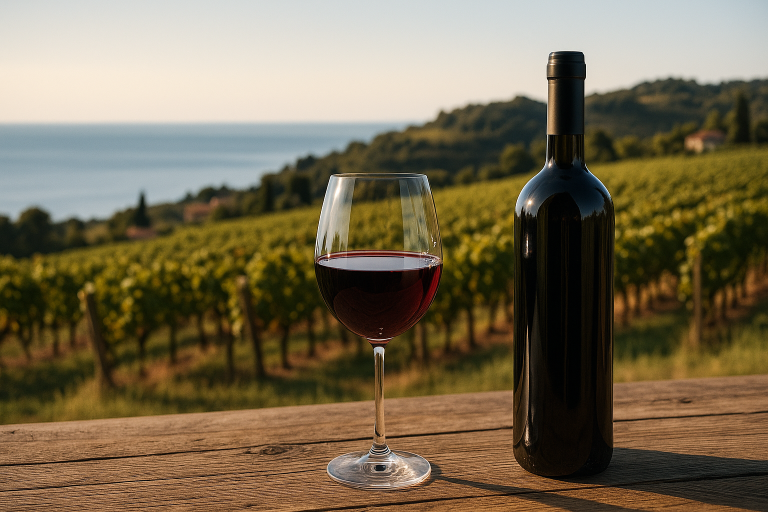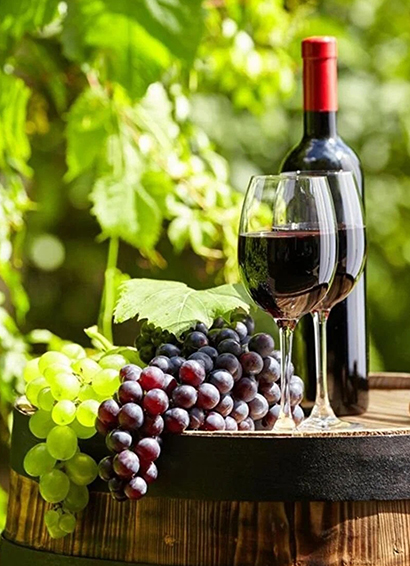Rich, earthy, and unmistakably Spanish, Tempranillo is the heart and soul of Spain’s red wine tradition. Known for its balance of ripe fruit and savory elegance, this noble grape has been shaping the identity of Spanish winemaking for centuries. From the rolling vineyards of Rioja to the rugged plateaus of Ribera del Duero, Tempranillo captures the very essence of Spain’s landscape, culture, and passion for wine.
A Brief History
The origins of Tempranillo trace back over 2,000 years, making it one of the world’s oldest known grape varieties. Its name comes from the Spanish word temprano, meaning “early,” a reference to its tendency to ripen earlier than most red grapes.
Believed to have ancient ties to the Iberian Peninsula, Tempranillo flourished in northern Spain long before the arrival of modern viticulture. It was the backbone of Spain’s Rioja region as early as the 13th century, later spreading south into Ribera del Duero, Navarra, and La Mancha.
While its presence outside Spain was limited for much of history, Tempranillo’s reputation grew internationally in the 20th century as wine lovers discovered its unique ability to combine Old World structure with New World fruitiness. Today, it stands proudly as Spain’s most important grape — and a rising star in regions across the globe.
Where It’s Grown
Tempranillo thrives in regions with hot days and cool nights, where it develops ripe fruit while retaining natural acidity.
- Spain: The grape’s spiritual home, especially in Rioja and Ribera del Duero. Rioja wines often blend Tempranillo with Garnacha for elegance and softness, while Ribera del Duero versions are bolder and darker, offering power and age-worthiness.
- Portugal: Known as Tinta Roriz or Aragonês, it plays a vital role in both red table wines and Port production.
- United States: Found in California, Oregon, and Texas Hill Country, where innovative winemakers craft fruit-driven styles with smooth texture.
- Argentina & Australia: Emerging regions experimenting with Tempranillo’s adaptability, producing vibrant, approachable wines.
Wherever it grows, Tempranillo consistently delivers balance — fruit, earth, and spice in harmonious proportion.
Tasting Notes
Tempranillo wines are typically medium to full-bodied with moderate tannins and acidity, offering remarkable versatility. Flavors often include red cherry, plum, dried fig, and tobacco, evolving into leather, cedar, and spice as the wine ages.
In Rioja, the grape often undergoes long oak aging, developing notes of vanilla, coconut, and sweet spice from American oak barrels. In Ribera del Duero, it’s denser and more concentrated, with blackberry, mocha, and mineral depth.
Aged Tempranillos — labeled Reserva or Gran Reserva — showcase earthy refinement, while younger styles (Crianza) highlight fresh fruit and vibrancy.
Serve slightly below room temperature (around 60–65°F) to let its layers unfold. It pairs beautifully with grilled lamb, roasted vegetables, cured meats, Manchego cheese, and hearty stews — the flavors of Spain on a plate.
The Essence of Tempranillo
Tempranillo’s enduring charm lies in its balance between tradition and versatility. It can be rustic or refined, bold or graceful, depending on its origin and age. Above all, it remains an authentic reflection of Spanish heritage — warm, expressive, and full of soul.
In every glass of Tempranillo, you taste more than just wine; you taste Spain itself — a timeless blend of sun, soil, and spirit that continues to captivate the world.







